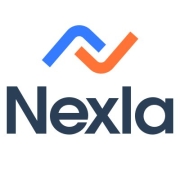Cloud Data Integration streamlines how organizations manage, transform, and migrate data across various platforms. This solution offers seamless connectivity and enhanced data management capabilities for businesses needing robust data integration strategies.
Organizations leveraging Cloud Data Integration benefit from improved data accessibility and collaboration. By providing scalable solutions, these systems support efficient data processing and storage management. They foster seamless data transfer between cloud and on-premises environments, allowing easy data synchronization. Businesses can better manage workloads and adapt to changing data needs, ultimately supporting critical operations.
What are critical features of this solution?In the retail industry, Cloud Data Integration supports effective inventory management by providing real-time data visibility across supply chains. Healthcare providers use these solutions for better patient data consolidation, improving care coordination. Financial services benefit from enhanced compliance reporting and fraud detection capabilities.
Cloud Data Integration is essential for organizations seeking to enhance data capabilities. It allows for better management of large datasets, efficient data processing, and enhances overall operational efficiency. This adaptability gives organizations the flexibility to scale and adjust practices according to their specific needs.
| Product | Market Share (%) |
|---|---|
| AWS Glue | 14.4% |
| AWS Database Migration Service | 11.1% |
| MuleSoft Anypoint Platform | 7.1% |
| Other | 67.4% |

























































Cloud Data Integration enhances business analytics by providing seamless access to real-time data from various sources. By integrating data across multiple platforms, you can gain comprehensive insights that drive informed decision-making. This integration enables a unified view of data, helping in identifying trends and patterns that were previously hidden. The scalability and flexibility of cloud solutions ensure that you can handle large volumes of data effectively, leading to more accurate and agile business analytics.
What are the security considerations for Cloud Data Integration?Security is a critical aspect of Cloud Data Integration as it involves handling sensitive information. It's vital to implement robust encryption methods during data transfer and storage to protect against breaches. Access controls and regular audits are necessary to safeguard data integrity. Furthermore, leveraging secure APIs and compliance with industry standards such as GDPR and HIPAA can fortify your data integration processes against potential threats.
How can Cloud Data Integration reduce operational costs?By adopting Cloud Data Integration, you can significantly lower operational costs through reduced infrastructure investments and maintenance overhead. Cloud-based solutions eliminate the need for expensive on-premises servers and storage, allowing you to pay only for the resources you use. Automation features in cloud integration tools also streamline processes, reducing manpower and accelerating implementation times, further cutting down expenses.
What is the role of APIs in Cloud Data Integration?APIs play a pivotal role in Cloud Data Integration by facilitating seamless communication between different cloud services and applications. They allow for the easy exchange of data across diverse systems, enabling you to integrate and automate workflows efficiently. APIs ensure that your integration solutions are scalable and adaptable to changing business requirements, providing flexibility without the need for extensive custom development.
Which industries benefit most from Cloud Data Integration?Industries such as finance, healthcare, retail, and manufacturing benefit significantly from Cloud Data Integration due to their extensive need for data analytics and real-time insights. Financial services use integration for enhanced risk management and personalized customer experiences. Healthcare organizations leverage cloud solutions for improved patient data management and compliance. Retailers optimize inventory and consumer engagement strategies, while manufacturers enhance supply chain efficiency through integrated cloud data solutions.